#1914-1996
Explore tagged Tumblr posts
Text
coming out of my well to shame the fandom re: treating Nico like he's from 1840 rather than 1940 in terms of living with medical innovations
Vaccines for the following diseases were available during this time:
Smallpox- first generation vaccines were available and work on second generation vaccines occured in the 1930s with production of an egg-based vaccine begun by the Texas Department of Health in 1939. DC schools required smallpox vaccination for children to be allowed to attend by 1930, so Nico would have gotten immunized for this even if he didn't get anything else.
Diphtheria- first vaccine was developed in 1913, then a cheaper version in 1924. Yep, it's the "antitoxin" they call for in Balto (1995)- it can be used to either treat active infection or immunize.
Pertussis (whooping cough)- first vaccine was licensed in the US in 1914, then another in 1931, and another that became the basis for the modern vaccine in 1932.
BCG vaccine for Tuberculosis (TB)- first available in 1921, but neither the US nor Italy mandated it. This vaccine is still given around the world today.
Tetanus ("lockjaw") - first vaccine was produced in 1924, then a more effective version in 1938. The combo DTP (diphtheria, pertussis, tetanus) vaccine was first released in 1948 and was used all the way up to 1996 when a new, safer version was released.
Anthrax- the veterinary vaccine in use today is based on the one developed in 1935 in South Africa. The Soviet Union developed a human vaccine that was available beginning in 1940.
Yellow fever- the vaccine still in use today (17D strain) debuted in 1939.
The first rabies vaccine was developed in 1885, for crying out loud!
Penicillin was used to cure infections as early as 1930, though it didn't hit mass-production until 1945. Other antibiotics (Salvarsan and Prontosil) were in use in the early 1900s (by 1910 and 1935, respectively).
Thyroxin (1914) and insulin (1923) were known quantities for treating endocrine disorders.
Medical radiography (x-rays) was a thing before 1900. There were portable ECG/EKG machines as early as 1927.
Cocaine was taken out of Coke in 1903. Like, not even Maria di Angelo would remember that.
Yes, a whole bunch of things changed in medical science between 1942 and the mid-2000s- plenty of fodder for "Will blows Nico's mind with modern medicine." I will even provide suggestions!
Vaccines for major childhood illnesses: polio (1952), measles (1962), mumps (1967), rubella (1969). IMO the polio thing is way slept on given how big the March of Dimes got in the public consciousness.
Closed-chest defibrillation (1950s) and CPR (1970s for the public)
Organ transplants (1953)
Ultrasound (1949/1961)
Not giving aspirin to anyone under 16 due to Reye's Syndrome risk (1980s) and the advent of other OTC painkillers (ibuprofen, 1969; paracetamol/acetaminophen, 1952; naproxen, 1976)
Insulin that comes from genetically engineered E. coli instead of purified animal pancreases (1978) so as to keep allergic reactions from happening
Rapid strep or flu tests (1980s/1990s) rather than waiting days to culture stuff
If y'all want a "they took the cocaine out of Coke" moment, might I suggest "what do you mean cigarettes/asbestos give you cancer" and/or "they took the lead out of the gasoline"?
But yeah...we've made a lot of progress since 1942 but it wasn't "you got ghosts in your blood and bad air do some drugs about it" back then- not by a long shot.
Wah wahwah wah wah back in my day we scoured Wikipedia and the rest of the internet to do background research on fandom-related minutiae and we liked it
#Nico di Angelo#fandom wank#Will Solace#rrverse#solangelo#pjo hoo toa#sorry this is just one of my pet peeves#forgive my bitching
102 notes
·
View notes
Text
a short patch timeline on reverse 1999
So I've been going back and forth for almost a year now on comprehending and helping people comprehend the timeline in Reverse: 1999 because oh my god, it's so, so convoluted that it's still taking a long time for me to even write down the information without overexplaining it. And that's just the main story.
However, I've been able to piece together the timeline events by patch and chapter to make things easier for everyone. (...unless you want me to even include the anecdotes, which is another can of worms I'd like to not open.)
However, since 2.0 forwards will be taking place after 1.9, I won't be including the patch names. But, I will put their placements in the timeline without making specific notes to avoid spoilers.
I'd like to first note that 1.6 (Notes on Shuori) has no definite placement on the timeline. The reason why is that 1.6 is personally considered a timeline anomaly; there are plot holes and information that made it difficult to deduce when it took place. (i.e. Yenisei's origins, Getian's character story, Bessmert's* presence) For now, I will leave this out.
Additionally, a lot of the character stories take place between the past and the future. Thus, the character story that chronologically takes place the earliest by far is Lucy's while the latest would be Ezra's.
—
First of all, we start with 1.8 (Farewell, Rayashki) in its entirety. From Windsong's past, to her arrival in Rayashki, to when the second "Storm" took place, and Vila and the kids needed to adjust to this new normal.
Next is Chapter 3 (Nouvelles et Textes pour Rien) and Chapter 5's interchapter. (The Star) Both the story of Vertin's becoming of the Timekeeper, and Greta Hofmann's experience with the Apeiron group are both aligned. Greta even mentions Vertin in her log after returning to the Foundation.
Afterwards we skip to 4 years later, and we're now in 1966. (Post First "Storm") Three events occur here. First, 1.1, (Theft of the Rimet Cup) then 1.3, (Journey to Mor Pankh) and then finally, the Prologue of our story. (This is Tomorrow)
Its then quite straightforward afterwards. We immediately follow up with the first 4 Chapters taking us through 1929 to late 1913. Then afterwards, we have Chapters 5-7 taking place within the first 3 weeks of January 1914, and then we're immediately taken to August 1990 at the end of Chapter 7.
I'd like to also add that within those 3 chapters, both rougelikes (Echoes in the Mountains and Series of Dusks) took place within the same time. Although, Series of Dusks ends before Chapter 7 due to Semmelweis and Lorelei leaving with the Foundation right before the "Storm" hit.
Now, in 1990, we start with 1.2 (Nightmare at Green Lake) followed by patches 2.0-2.2, all of which take place in immediate succession. And then for now, we end with 1.5. (Revival! Of the Uluru Games)
So if I put all of these in one list, it looks like this:
Notes on Shuori (1.6) - Undetermined placement
Farewell, Rayashki (1.8) - 1999+1 (1996) -> 1999+2 (1985)
Nouvelles et Textes pour Rien + The Star (Ch. 3 and Ch. 5 Interchapter) - 1999+4 (1987)
Theft of the Rimet Cup (1.1) - March 1966
Journey to Mor Pankh (1.3) - April-May 1966
This is Tomorrow (Prologue) - Jun. 3 1966 -> Feb. 14 1929
In Our Time (Ch. 1) - Feb. 14 1929
Tender is the Night (Ch. 2) - Feb. 15 1929 -> Aug. 1913
Nouvelles et Textes pour Rien (Ch. 3 - Present Time) - Aug. 25 1913
El Oro de Los Tigres (Ch. 4) - Aug. 26 -> Oct. 10 1913
Prisoner in The Cave (Ch. 5) - Dec. 24 - Jan. 4 1914
The Star (Ch. 5 - Interchapter) - Jan. 4 1914
Echoes in the Mountain (Rougelike 1) - Undetermined time, before Jan. 8 1914
E lucevan le Stelle (Ch. 6) - Jan. 6-12 1914
Series of Dusks (Rougelike 2) - Jan. 8-13 1914
Vereinsamt (Ch. 7) - Jan. 12-13 1914 -> Aug. 1990
Nightmare of Green Lake (1.2) - Sept. - Oct. 1990
Patches 2.0 - 2.2 - Sept. - Nov. 1990
Revival! Of the Uluru Games (1.5) - Jan 1991
The story can only get even more convoluted from here. As of the moment, I've been sort of working on a larger timeline to piece the entire story together, especially since we've yet to finish it before the story ends. New stories and information continuously flows in the meantime.
88 notes
·
View notes
Text

Charles Shannon (1914-1996), 'The Birth of Venus', ''The Tatler'', Vol. 94, #1223, 1924 Source
#Charles Shannon#american artists#the tatler#vintage illustration#vintage art#the birth of venus#venus#ovid#roman mythology#roman myth
181 notes
·
View notes
Text

An Endling is the last known member of a species or subspecies. The death of an endling means the end of the species as a whole. The word was supposedly coined by Robert Webster in the mid 1990s. The term is used by museums and in writing, however, it still does not have an entry in The Merriam-Webster Dictionary. Robert Webster tried his best to get the word into the dictionary before his death in 2004.
One of the most famous endlings was Benjamin, the last known thylacine, who died in the Hobart Zoo on September 7th, 1936. It is actually not known if the animal's true name was Benjamin, but that is what is usually used. Some stories state that Benjamin died from neglect rather than old age, having been left in its outside enclosure in the cold overnight. While others disregard this, as the last known thylacine would have been incredibly valuable and important to the zoo.
Other notable endlings are:
- Martha, the last passenger pigeon, who died on September 1st, 1914.
- Lonesome George, the last Pinta Island tortoise, who died on June 24th, 2012.
- Booming Ben, the last Heath Hen, who was last seen on March 11th, 1932.
- Turgi, the last known Partula turgida, a type of Polynesian tree snail, who died on January 31st, 1996.
113 notes
·
View notes
Text

Dorothy Lamour, December 10, 1914 – September 22, 1996.
70 notes
·
View notes
Text
Did you finish Chapter 7 and feel ready for another batch of heart-shattering details? :D




Kakania and 37's in the storm of 1914 create interesting callbacks to Vertin in the storms of 1966 and 1987. -37 and Vertin survived every storm so far, both suffering heavy losses in the storm of 1987 due to miscalculations.
-The storm of 1987 was the first time Vertin saw the reverse effect (she was out during the storm of 1996, but didn't saw anyone getting reversed), just like Kakania did in the storm of 1914. There's also the small detail of a "circle" being heighlighted in both cases (The Ring's ring and the unknot). -After the Storm of 1987, both Vertin and 37 spent years researching the storm, archiving their first mayor breakthroughs during those that took place in 1966 (Vertin saving Regulus and APPLe with the incantation in esperanto) and 1914 (37 deciphering the code given by Apeiron). -What Vertin and Kakania pulled in the storms of 1966 and 1914 were gambles. While technically both can be seen as wins, since they ended up saving lives, Vertin saved the 2 people she was aiming to save, while Kakania saved herself, the least person she was interested in saving.
-Likewise, Vertin's journey in the breakaway incident is similar to 37's journey through the 24 hours before the storm of 1914: Both pursued the truth which lead to them venturing into the outside world, at the cost of the lives of close friends who choose forging their own path, even if it lead them to their demise.
-The number "7": The total amount of students who took part in the breakaway incident is described as "8 to 9" before Matilda left, which either means either 7 students took part OR that the total of casualties were 7. In the same storm (which reversed time from 1987 to 1977) died 77, 37's mother. Both Kakania and 37 have sevens in their birthdays (December 7th and July 27th respectively) and Vereinsamt is the 7th chapter. The storm of 1966 is also the 7th storm. Feel free to add anything, at this point I'm not sure how much I'm over reading this.
#reverse 1999#r1999#bluepoch#reverse: 1999#vertin#videogame#gacha#37#kakania#reverse 1999 spoilers#reverse: 1999 spoiler#r1999 spoilers#vereinsamt#nouvelles per le pour rien
60 notes
·
View notes
Text

List of books and movies mentioned by Acchan!
Might post an anime version of this soon <3
BOOKS:
仮面の告白 “Confessions of a Mask” by Yukio Mishima (1949)
生きるヒント “Living Tips” by Itsuki Hiroyuki (1993)
斜陽 “The Setting Sun” by Osamu Dazai (1947)
“The Picture of Dorian Gray” by Oscar Wilde (1890)
こころ”Heart” by Natsume Soseki (1914)
“Crime and Punishment” by Fyodor Dostoevsky (1866)
人間失格“No Longer Human” by Osamu Dazai (1948)
死霊“Death Spirits” by Yutaka Haniya (1948)
猫鳴り “Neko Nari” by Numata Mahokaru (2007)
“Coin Locker Babies” by Ryu Murakami (1980)
グロテスク “Grotesque” by Natsuo Kirino (2003)
“Notes from Underground” by Fyodor Dostoevsky (1864)
“The Brothers Karamazov” by Fyodor Dostoevsky (1879-1880)
“Salomé” by Oscar Wilde (1891)
破局 “Catastrophe” by Tono Haruka (2020)
新宿鮫 “Shinjuku Shark” by Arimasa Osawa (1990)
堕落論 “Discourse on Decadence” by Ango Sakaguchi (1946)
五分後の世界 “The World Five Minutes from Now” by Ryu Murakami (1994)
*Manga*悪魔の花嫁 “Bride of Deimos” by Etsuko Ikeda, illust. By Yuuho Ashibe (1974-1990)
九月が永遠に続けば “To Continue Forever in September” by Numata Mahokaru (2005)
彼女がその名を知らない鳥たち “Birds Without Names” by Numata Mahokaru (2006)
銀河鉄道の夜 “Night on the Galactic Railroad” by Kenji Miyazawa (1927)
怒り”Rage” by Shuichi Yoshida (2014)
悪人 “Villain” by Shuichi Yoshida (2007)
MOVIES:
The Green Mile by Frank Darabont (1999)
Bohemian Rhapsody by Bryan Singer (2018)
The Godfather by Francis Ford Coppola (1972)
Pierrot the Fool by Jean-Luc Godard (1965)
The Elephant Man by David Lynch (1980)
老ナルキソス Old Narcissus by Tsuyoshi Shouji (2023)
時計は生きていたThe Clock was Alive by Seijiro Kouyama (1973)
The Mission by Roland Joffé (1986)
Poongsan by Juhn Jai-Hong (2011)
Midnight FM by Kim Sang-man (2010)
Pusher by Nicolas Winding Refn (1996)
Misery by Rob Reiner (1990)
From Paris with Love by Pierre Morel (2010)
異人たちとの夏 The Discarnates by Nobuhiko Obayashi (1988)
Purple Noon by René Clément (1960)
Bonnie and Clyde by Arthur Penn (1967)
狂い咲きサンダーロード Crazy Thunder Road by Gakuryuu Ishii (1980)
Undo by Shunji Iwai (1994)
犬神家の一族 The Inugami Family by Kon Ichikawa (1976)
The Shawshank Redemption by Frank Darabont (1994)
The Brave by Johnny Depp (1997)
Antartica (Nankyoku Monogatari) by Koreyoshi Kurahara (1983)
Here is the link to my actual twitter thread, I update it every time I run into a new book or movie he has mentioned! The information to make this list was taken from several inerviews, radio programs, and even some of the Fish Tank Bulletins. If you know any other book/movie he has mentioned but is not here, do not hesitate to let me know!
ENJOY!
114 notes
·
View notes
Text
A History of Formula One Grand Prix in the United States
After a near month long hiatus following the Singapore Grand Prix, Formula One returns this weekend with the United States Grand Prix at the Circuit of the Americas in Austin, Texas. This is the second of three races in the United States this season, and a lot of people attribute the increase of American GPs to Drive to Survive and the peak in popularity that caused over here.
That may be true, however, two things complicate this fact:
One is that this is not the first time there have been three American F1 races in a season.
Two is that Grand Prix racing in the United States goes back further than in any country other than France.
So, today...let's talk about the history of the United States Grand Prix, and Formula One races in the United States more broadly.
The first race that could be considered a Grand Prix in the US was the Vanderbilt Cup, held on Long Island in the early 1900s. The initial 1904, 1905, and 1906 races were held on dirt roads, however, in response to the success of the 1906 French Grand Prix, William Kissam Vanderbult II financed the construction of the Long Island Motor Parkway.
This would not just provide a paved, modern road to Long Island, but it would also serve as the setting for the 1908 Vanderbilt Cup, won by American George Robertson in an American-made car called the Locomobile. An American victory in an American race governed by the American AAA.
But this is open wheel racing in America, so of fucking course there was a governing dispute already.
The AAA raised their membership dues in 1908, that was strike one, and then strike two was when they refused to adopt the Grand Prix regulations drafted by the AIACR - the FIA under its initial name - which paved the way for the Automobile Club of America to emerge as a competitor to the AAA.
And their showpiece event? the American Grand Prize.
Yup, the ACA went down to Georgia, found a stock car race run by the Savannah Automobile Club, and decided to turn that into the very first proper Grand Prix in America. The state of Georgia authorized the use of convict labor to lengthen the stock car track to 25.1 miles for the Grand Prize.
It was held in 1909 and won by Frenchman Louis Wagner...who in 1926 would go on to win the first British Grand Prix as well. An impressive resume.
The tea drinkers can write their own blog though, more on the US now!
Come 1911, and both the Vanderbilt Cup - aimed at American talent - and the American Grand Prize - aimed at international drivers - would both be held together in Savannah, Georgia. They would once again be hosted together in Milwaukee in 1912, in Santa Monica in 1914 and 1916, and in San Francisco in 1915.
World War I would kill off European participation however, and after 1916, the American Grand Prize went away.
The Vanderbilt Cup would briefly return in 1936 and 1937, back at Long Island, this time at the Roosevelt Raceway. However, with Tazio Nuvolari winning in an Enzo Ferrari-run Alfa Romeo winning in 1936 and then Bernd Rosemeyer winning in an Auto Union next year, the American audiences weren't convinced.
The 1930s version of the Vanderbilt Cup just served as a big money race for the Europeans to win.
So the American Grand Prize and the Vanderbilt Cup didn't work out, but what was working in America at that time was oval racing on board tracks.
The Astor Cup, held on the two-mile Sheepshead Bay Speedway in Brooklyn won over the Long Island audience instead.
If the names of these trophies sound familiar, it's because in 1996, during the CART-IRL split, CART revived the name Vanderbilt Cup and built a replica trophy as the prize for the US 500. Yup, the history of the Vanderbilt Cup was used to go up against the Borg-Warner Trophy of the Indianapolis 500.
Well, after four years of the US 500, in 2000, the Vanderbilt Cup became the trophy for the CART championship instead. The Champ Car World Series continued this tradition.
When Champ Car and the IRL Indycar Series merged, the Astor Cup name was revived instead. From 2011 onwards, the Indycar series champion receives the Astor Cup.
Anyway, back to the F1 in the US.
Initially the World Championship for Drivers, in 1950, gave the US date to the Indianapolis 500, seeing it as the biggest and most important race in the United States.
This was in spite of the fact that the Indianapolis 500 was governed by the AAA - and later USAC - and once the World Championship went to F2 regulations in 1952, Indy and the rest of the championship weren't even run under the same regulations.
In fact, the only time a World Championship driver came over to Indy was in 1952 (the first year of those F2 regulations) when Ferrari took Alberto Ascari and a 4.5L V12 Ferrari 375 to Indy in an attempt to win the biggest race in America. Alberto would retire, and Indy would be the only stain on an otherwise perfect 1952 season for Ascari.
Meanwhile, road racing was returning to prominence in the United States as permanent venues like Riverside and Sebring began to emerge.
In 1958, Riverside hosted a United States Grand Prix as part of the USAC championship.
In 1959, the II United States Grand Prix was held at Sebring, and this time, it was part of the Formula One World Championship. This race was won by Bruce McLaren in a Cooper.
In 1960, the race moved to Riverside, where it was won by Stirling Moss in a Lotus. This was also the last year in which the Indianapolis 500 counted for the World Championship.
And in 1961, the United States Grand Prix finally settled on its first permanent home, when Watkins Glen was chosen as the venue. From 1961 to 1980, Watkins Glen was the home of the USGP, a stint that lasted so long that the first winner was Innes Ireland in a Lotus and the last was Alan Jones in a Williams.
It was not the only USGP though.
I'd like to welcome everybody to the wild wild west.
Yup, from 1976 to 1983, F1 came to the LBC, the Long Beach Grand Prix joining the calendar under the title of United States Grand Prix West. The 1976 race was won by Clay Regazzoni in a Ferrari, while the last four races were won by Cosworth DFV powered cars, giving Long Beach a reputation as the race that the turbo powered cars couldn't win.
Indeed, the first win for a turbo car at Long Beach was 1984, when it was a CART race. The winner? Mario Andretti.
The next race on our list came in 1981, to replace Watkins Glen.
It was the Caesar's Palace Grand Prix, held in the parking lot of the casino for two years before it too was shifted off to the CART series - which itself only lasted two years before going away entirely.
The 1981 race went to Alan Jones in a Williams, picking up where he left off at Watkins Glen.
1982, meanwhile, went to Michele Alboreto in a Tyrrell.
1982 had a third US F1 round - like I said, the current era isn't the first time this has happened - being the Detroit Grand Prix in the downtown of the motor city.
A tight, twisty track swerving through the heart of the Motor City, the first Detroit Grand Prix was won by John Watson in a McLaren, while the last three were all won by Ayrton Senna. 1986 in a Lotus-Renault, 1987 in a Lotus-Honda, and 1988 in the all-conquering McLaren-Honda.
In 1989, Detroit too became a CART race, but unlike Caesar's Palace, it was actually successful.
In 2023, the Indycar Detroit GP returned to the streets of downtown, racing around the Renaissance Center in a layout best described as "bleh."
In any case, 1982 marked three American F1 rounds, but funnily enough...none of them were actually called the United States Grand Prix.
Long Beach was the USGP West, which was a rather clunky title given that there was no USGP to be west of.
Detroit was Detroit and Caesar's Palace was just Caesar's Palace.
Is Caesar's Palace the smallest geographic unit to get a Grand Prix named after it? It's gotta be up there, right?
1984 was a similar story, as there were two American F1 races back-to-back: the Detroit Grand Prix won by Nelson Piquet, and the one and only Dallas Grand Prix, won by Keke Rosberg.
Dallas was a mid-summer race held in the high heat of central Texas and that was only the start of the problems. The track surface was crumbling, the fans were in constant fear of the event being cancelled from out from under them, and the drivers felt the track was narrow and lacking in runoff areas.
CART passed on this one, instead, it was briefly brought back as a Trans Am race before fading into obscurity.
Dallas didn't work out, Detroit and Long Beach went to Indycar, and the less said about Caesar's Palace, the better.
Was Formula One in the US dead after 1988?
Not if anything to say about it, Phoenix has.
Yup, Phoenix of all places stepped in to host the USGP - returning to that name - in 1989. This event actually lasted three years despite triple digit summer heat, a disintegrating track surface, and an uninspired layout threatening to confine the track to the same fate as Dallas.
Alain Prost won in 1989, Senna won in 1990 and 1991.
Ecclestone initially promised the promoters the Phoenix Grand Prix would be held again on March 15th, 1992, but instead, the race was cancelled.
Formula One would not return to the US until 2000.
Tony George, in his quest to make the Indianapolis Motor Speedway the top racing venue in the country, brought NASCAR to IMS in 1994, and in 2000, he created an infield road course. This infield road course has become the home of sports car racing at Indianapolis, hosts an Indycar race ahead of the 500, and has in the past hosted MotoGP, NASCAR, and F1.
This was great, right? Formula One was back in the US and it was at the same place which hosted all those world championship rounds in the 1950s. F1 had finally reconciled Indianapolis with its road racing nature. Could this finally be how the USGP finds a stable home in the United States?
Well, it was going pretty good...up until 2005.
The oval had been diamond ground when it was repaved ahead of 2005. Bridgestone - the tyre supplier of Ferrari, Jordan, and Minardi - knew this, as they owned Firestone, which supplied the IRL Indycar Series with tyres, as it does with Indycar now.
Michelin, who supplied the rest of the grid...did not.
And Ralf Schumacher crashed in practice for the second time in two years. On a Michelin-clad Toyota.
Then Ricardo Zonta stepped in to replace Ralf...and he crashed as well.
The Michelin tyres couldn't take the oval corners, which formed the big final corner of the IMS Road Course. The Michelin teams tried to find a solution - whether that be a chicane, allowing pitstops, or using a different specification of tyre.
In the end, the FIA and Michelin could not come up with a compromise.
And in Indiana State Law, if Michelin let its teams race and something happened, they could be held criminally liable.
Thus, the Michelin teams pulled out of the race.
A six-car farce of a race then occurred between the Bridgestone teams as the fans booed and jeered.
All of IMS's good will in F1 evaporated.
After 2006 and 2007, the USGP disappeared.
An attempt was made to create an American Grand Prix in Port Imperial, New Jersey with the cars racing under the shadow of the New York skyline, but after years of trying this never got off the ground.
Instead, in 2012, the USGP found its modern home in COTA. Circuit of the Americas weathered the storm of some truly awful attendances in the mid-2010s - including a soggy and awful 2015 where the teams hardly got any running ahead of the race - to rebound and become one of the most highly attended races in history by the 2020s.
In 2022, the USGP at Austin was joined by the Miami Grand Prix in Miami Gardens, Florida. A flashy, exclusive race around the Hard Rock Stadium where the Dolphins play. This race saw Lando Norris take his maiden Grand Prix victory in 2024, kicking off a return to form for McLaren.
2023 added the Las Vegas Grand Prix, taking the idea of the Caesar's Palace Grand Prix to the next level. Rather than racing around a parking lot in the day, they raced down the strip at night under the lights of fabulous Las Vegas.
Miami and Las Vegas are considered grossly expensive and exclusive races meant to milk the US market, and maybe they are, but as an F1 fan in the United States, I used to dream of times like this.
We have three races, all hundreds of miles apart to give some decent coverage throughout the country, and I'd argue each one brings a different vibe.
Miami is all pastel colors and white awnings.
Las Vegas is the neon lights with the cars ripping down the Strip.
Austin is the larger than life red, white, and blue Americana that suits the main race.
I have many, many, many, many, many problems with the state of Formula One nowadays. I have many weeks of negative blogposts to prove that, but I'll never say that Formula One has too many races in the United States.
Las Vegas is as far from Miami as Madrid is from Moscow.
I know Europe is the home of Grand Prix racing, but as this has shown...the US has plenty of history too.
So onto Austin for the 2024 United States Grand Prix, with Formula One looking to be in a more competitive place than it was at this time a year ago.
38 notes
·
View notes
Text




Dorothy Lamour (December 10, 1914 – September 22, 1996)
34 notes
·
View notes
Text
My next post in support of Ukraine is:
Next site, Trinity Bishops Cathedral in Sumy, Sumy Oblast. It was built from 1901-1914. During WWII, the cathedral was damaged, and during soviet times, it was shut down and used as warehouse. In 1996, it became a religious cathedral again. It was a part of the Ukrainian Orthodox Church of the moscow Patriarchate at that time. It may no longer be so due to Ukraine breaking with the moscow Patriarchate due to terrorist muscovy's invasion.
#StandWithUkraine
#СлаваУкраїні 🇺🇦🌻




22 notes
·
View notes
Text
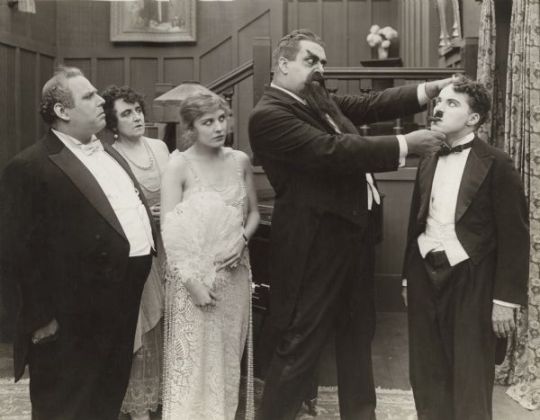
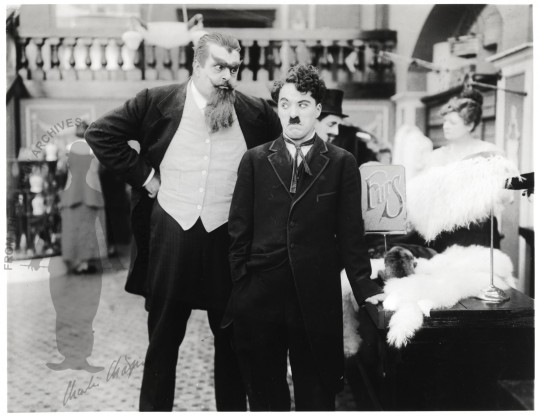
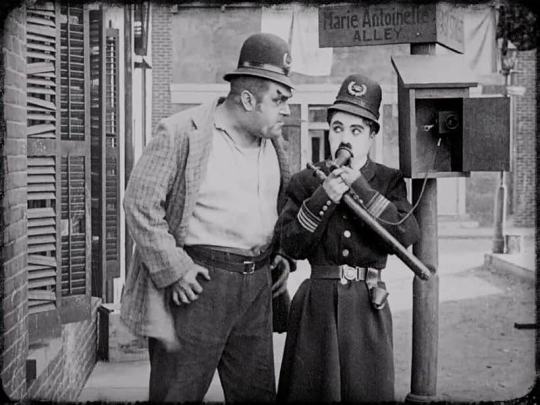
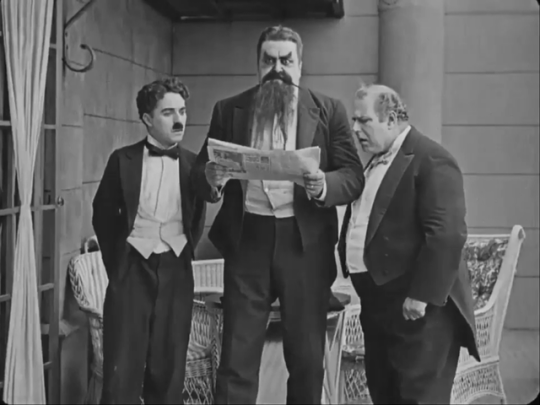
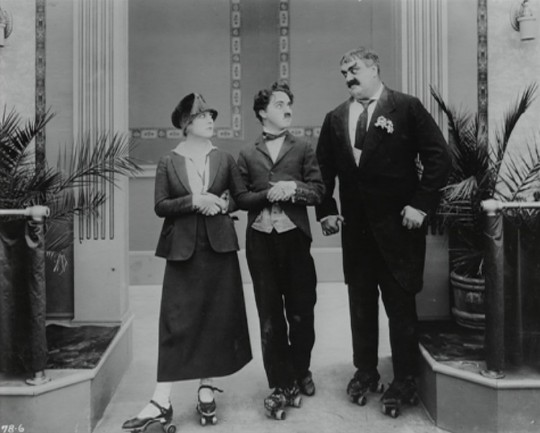
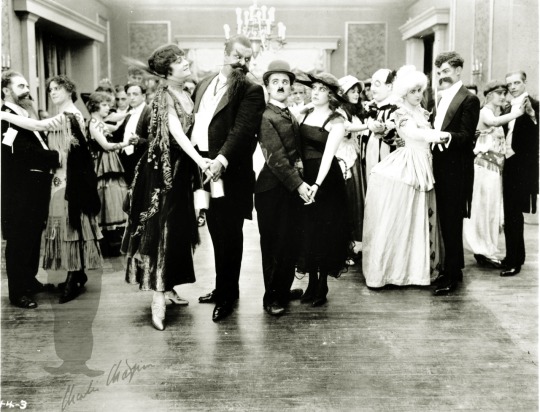
ERIC CAMPBELL born Alfred Eric Campbell on April 26, 1879 in Dunoon, Scotland.
He appeared in eleven films with Charles Chaplin, in which he usually played the role of the great villain. Initially, he played in local theaters in Wales and Scotland. He was noticed and hired by the English impresario Fred Karno for his comedy troupes "Fun Factory", which also featured other comedians, Charlie Chaplin and Stan Laurel. Eric Campbell arrived in New York with Karno's group in July 1914 and was soon hired by Broadway producer Charles Frohman. Eric became very popular as a stage actor. In late 1915, Charlie Chaplin and his brother Sydney, who were in New York to sign a contract with Mutual, found Eric working on George M. Cohan's play "Pom Pom," and in March 1916 took him to Hollywood. Eric Campbell was a huge man, standing over six feet tall and weighing over 250 pounds. He also wore heavy makeup; black eyebrows, darkened eyes, and a long, untidy beard. His first film was "The Floorwalker" (1916), in which he played the role of a tough villain. He played the same, sinister character to the film in other films, such as "The Rink" (1916), "The Pawnshop" (1916), "The Adventurer" (1917), "The Cure" (1917), "The Immigrant" (1917), "Easy Street" (1917). Early in 1917, Campbell made his last film for Mutual, "The Adventurer", after which Charlie Chaplin began building his own studio. During this time, Campbell worked with Mary Pickford and starred in Amarilly of Clothes-Line Alley (1917). His personal life was dotted with setbacks. On July 9, 1917, his wife died suddenly of a heart attack after dinner at a Santa Monica restaurant near their home. His 16-year-old daughter, Una, was hit by a car and seriously injured. He also struggled with family problems. In December, Campbell attended a Christmas party at the Vernon Country Club and drove back to Los Angeles very drunk. As he approached the intersection of Wilshire Blvd and Vermont Ave, traveling at over 60 mph, he lost control of his car, crossed Wilshire and collided head-on with another car, killing himself instantly. He died on his way home in a car accident on December 20, 1917. He was 37 years old. Una Campbell, the actor's only child, returned to the UK to live with relatives in Nottingham after her father died. She married Philip O. Bull in Lewisham in 1930 and died in Croydon in 1967. A 1996 documentary film, Chaplin's Goliath: In Search of Scotland's Forgotten Star, written and directed by Kevin MacDonald, explored Campbell's life and work. During filming, a plaque commemorating Campbell was placed at Rosedale Cemetery and another was added to the Castle House Museum in Castle Gardens, Dunoon.
Photos :
Charlie Chaplin and Eric Campbell on the set of "Advetnurer" (1917). This was the last film for the Mutual studio. ~ In this scene still from Chaplin's 1917 silent film "The Adventurer," Eric Campbell, made-up with large eyebrows, beard, and moustache, closely scrutinizes Charlie Chaplin's face. Watching, from left to right, are Henry Bergman, Marta Golden, and Edna Purviance;
Charlie Chaplin and Eric Campbell on the set of "Floorwalker" (1916), Mutual;
Charlie Chaplin and Eric Campbell on the set of "Easy Street" (1917), Mutual;
Charlie Chaplin and Eric Campbell on the set of "Advetnurer" (1917);
Charlie Chaplin’s classic "The Rink" (1916) features the Tramp working as a waiter in a high-class restaurant and bunking off to the roller-skating rink in his spare time, where he gets involved with a beautiful skater and a philandering villain, culminating in the roller-chase of all time;
Charlie Chaplin and Eric Campbell on the set of "The Idle Class" (1920), First National Studios.


"The Immigrant" (1917) Charlie Chaplin, Eric Campbell and Albert Austin.
17 notes
·
View notes
Text

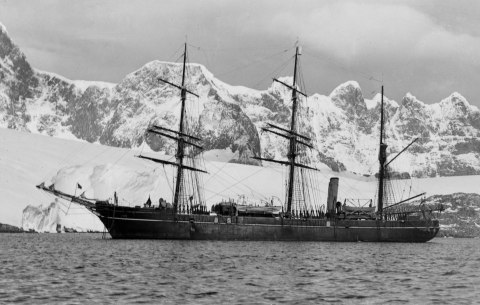

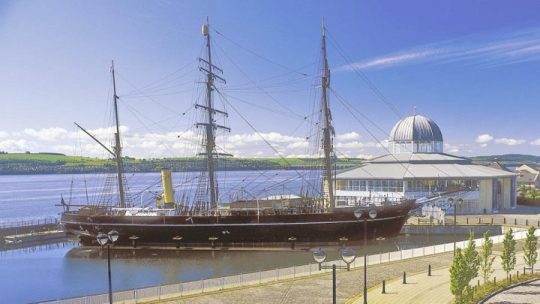
21st March 1901 saw the launch in Dundee of the Royal Research Ship Discovery, the ship that would help Captain Scott make his name as an Antarctic explorer.
Designed for Antarctic research, she was launched as a Royal Research Ship (RRS) in 1901. Discovery was the first ship of its kind to be constructed specifically for scientific research. She was also the last wooden, three masted ship to be built in this country and is the only one that survives.
The basics of the ship were built on the same principles as the whaling ships - hundreds of them worked out of Dundee in the 19th and early 20th century.
The Discovery's first captain was the famous explorer 'Scott of the Antarctic'. Captain Robert Falcon Scott, was appointed in 1901. He was Born in Devon, England, basically a shy man who also had great courage and strength. It was said that Captain Scott was responsible for the errors that turned his expedition into a disaster. However, research in the past few years has discovered that it was some of the men under Captain Scott's command, who disobeyed his orders that led to tragedy.
Another famous explorer joined Captain Scott on RRS Discovery's first voyage and that was Sir Ernest Shackleton. He would later sail in another famous ship the 'Endurance' in 1914-16.
Since 1996 Discovery has been berthed at Dundee, and is a major tourist attraction to the city, the ship however is said to be one of the most haunted in the world and paranormal teams regularly set up all sorts of equipment on the ship, I wonder if our resident expert on the paranormal, Leonard Low has anything to say on the subject?
Anyway, one of the main spirits said to roam the ship is that of Charles Bonner. While Discovery was leaving New Zealand, the young seaman fell from the crows nest, on the mainmast, landing head first onto the deck, crushing his skull. Quite a few independent psychics have picked up on the seaman and feel that he is still a strong presence on the ship. His spirit is said to be most powerful on the deck at the place where he fell to his death. It's also been reported that people have sensed and seen the spirit of Shackleton roaming around the ship and it may be his spirit that has been observed in one of the cabins. Psychic mediums have also picked up this presence on numerous occasions. Other apparitions include the spirit of a little boy and shadow figures are seen roaming the ship in various areas.
Electricity seems to attract the spirits on the Discovery. In the cabin that belonged to Ernest Shackleton, light bulbs constantly blow despite the area being checked by electricians. In addition when the 'Ghost Club' investigated the ship, light bulbs in Captain Scott's cabin were found to be dislodged from their fittings.
The Ghost Club investigators experienced strange movements of a rope. This was a very heavy ship's rope that couldn't be moved simply by walking past, so why it began swaying remains a mystery. In addition investigators felt the chairs or benches that they were sitting on being moved by an unseen force.
There are also frequently the sound of footsteps roaming around the ship. These have been heard by people and also caught on recording equipment. Investigators have yet to find out who is making the footsteps - could it be Charles Bonner or Ernest Shackleton?
There is also one interesting account of a visitor to the ship who had spent some time talking with a sailor, but no one else could see the person she was speaking to. Similar events have happened with other visitors to the ship, where they have seen a spirit that looked solid and stopped to talk to him only to realise later that the person was not anyone alive connected to the ship.
41 notes
·
View notes
Text
Welcome to my blog!
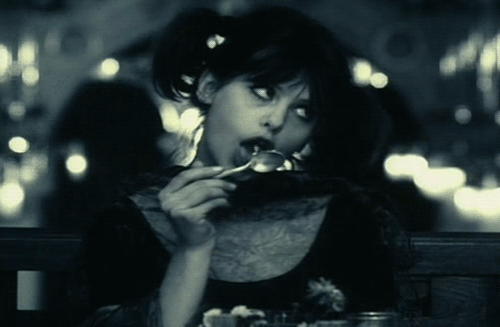
You can all call me Elio. I have a past with Tumblr, but this is my first time having a blog! I'm very excited to share things here!
Here I will be discussing different medias as well as personal updates in the future.
I am interested in film, literature, and music. Please send recommendations/requests! I love emotional pieces as well as anything strange or unusual.
Here is a list so you can get a hint of my taste in media ♥️♥️ I'm excited to expand this list!
Movies and Television
The Red Shoes (1948)
Daisies (1966)
Suspiria (1977)
The Craft (1996)
Practical Magic (1998)
Labyrinth (1986)
Black Swan (2010)
Call me by your name (2017)
Lisa Frankenstein (2024)
Books
Dr Jekyll and Mr. Hyde (1886)
The Picture of Dorian Gray (1890)
Maurice (1914/1971)
The Secret History (1992)
Call me by your name (2007)
Albums
The Rise and Fall of Ziggy Stardust... (1972)
Never for Ever (1980)
When the Pawn... (1999)
Bury Me at Makeout Creek (2014)
Please Send Recommendations! ♥️♥️♥️
More about me...
I have classes Monday-Thursday except for holiday.
I write poems and short stories!
I like horror and suspenseful media.
I love collecting things like porcelain dolls and vinyl!
Find my Socials
Instagram
Instagram Spam
Goodreads
Pinterest
Letterboxd: @eliosvniverse
Masterlist
Reviews and ratings
Original poetry and stories
I also write fanworks... You can find them @moiravim
#blog#welcome to my blog#introduction#film#cinema#music#books and reading#book reccomendation#book review#lgbtqia#lgbtq community#gay#bisexual#ftm#movie review#film recommendations#film review#poetry#short story#books#tbr list#tbr#book recommendations#book blog#movie blog#film blog#music blog#music recs#music reccomendations#music review
8 notes
·
View notes
Text
Youngest Original ~ TVDU
Timeline
Mikaelson OC
This is the timeline I will be using for my series.
Masterlist
Prologue, Ch1

946 A.D. - Mikael is born
951 A.D. - Esther is born
968 A.D. - Esther and Mikael get married
969 A.D. - Freya is born
971 A.D. - Finn is born
973 A.D. - Elijah is born
974 A.D. - Freya is taken away by her aunt Dahlia, Esther and Mikael decide to move their family into the New World
976 A.D. - Klaus is born
978 A.D. - Kol is born
982 A.D. - Rebekah is born
983 A.D. - Kassandra is born
988 A.D. - Henrik is born
1001 A.D. - Henrik is killed by werewolves, Esther and Mikael conspire together to protect the rest of their children, in the process creating the first-ever vampires aka the Originals
1114 A.D. - All the Originals get daggered for the first time by the Brotherhood of the Five, Finn stays in the state for nine centuries
1473 - Katerina Petrova is born
1490 - Katerina gives birth out of wedlock, and is banished by her father
1492 - Katerina meets the Originals, and turns herself into a vampire
1702 - Kol is daggered
1821 - Kol is daggered
1835 - Rebekah is daggered
1839 - Damon Salvatore is born
1846 - Stefan Salvatore is born
1864 - The Salvatore brothers meet and fall in love with Katherine Pierce. The Salvatores become vampires
1914 - Kol is daggered
1922 - Klaus, Rebekah, and Kassandra meet Stefan Salvatore for the first time. Rebekah is daggered
1945 - Kassandra parts ways with Klaus and starts a life in Switzerland
1992 - Elena Gilbert is born
1996 - Kassandra is daggered
March 2010 - Elena learns about the Originals and meets Elijah
April 2010 - Klaus breaks the hybrid curse
May 2010 - Klaus daggers Elijah
August 2010 - Rebekah is undaggered
September 2010 - Kassandra is undaggered after 15 years. Elena daggers Rebekah. Klaus kills Mikael
October 2010 - Damon undaggers Elijah. Bonnie and her mom open Esther's coffin. Elijah undaggers Kol, Finn, and Rebekah
#the vampire diaries#vampire diaries#the originals#the mikaelsons#finn mikaelson#freya mikaelson#elijah mikaelson#klaus mikaelson#kol mikaelson#rebekah mikaelson#kassandra mikaelson#tvd fanfiction#the originals fanfiction#tvd aesthetic#tvdu#tvd universe#my oc stuff#my ocs#my original characters#fem oc#vampire oc
28 notes
·
View notes
Text

Marguerite Duras, April 4, 1914 – March 3, 1996.
175 notes
·
View notes
